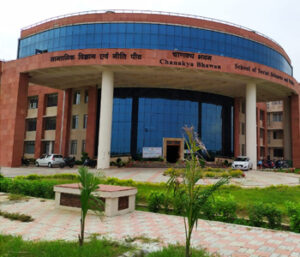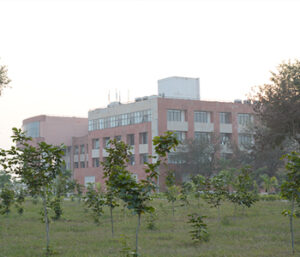


Department of Physics, under the umbrella of School of Physical & Chemical Sciences, has been providing support to the undergraduate programs of Central University of South Bihar (CUSB) since its inception. The M.Sc. Degree Program in Physics was launched from the academic session 2018-19 with the intake of 35 students which was subsequently raised to 45 students to meet the growing demand. In addition, department started the Ph.D. program in various frontier areas of Physics from the session 2020-21
The Department of Physics is committed to engage in high quality research and in the pursuit of excellence in teaching. The faculty members of the department are actively involved in cutting-edge theoretical and experimental research in challenging areas. To promote interdisciplinary research for solving grand challenges facing our society, the department has established both intra-university as well as inter-institutional collaborations with laboratories in India and overseas.
Department Overview
|
Established in |
2016 |
|
Employee Strength |
Faculty- 08 |
|
Student Strength |
Research Scholar & JRF- 16 |
|
Placement 2021 |
x (tentative) |
|
Publications, Books & Patent |
Publications- |
News and Announcements
Important Links
-
Formats & Downloads
-
Archive
Board of Studies (BoS)
BoS is a statutory body for each department/centre, primarily responsible for syllabus design and regular update. As described in the Ordinance section 25.10,
The functions of the Board of Studies shall be:-- To recommend to the School Board, courses of studies offered by the Department/Centre and continue updating syllabus;
- To take all steps in accordance with the provisions of the Regulations about teaching and evaluation of various courses/programmes of the Department/Centre;
- To recommend to the School Board measures for the improvement of teaching and research in the Department/Centre;
- To constitute panels of experts to be considered for appointment as Examiners, Board of Examiners for various courses/academic programmes and M.Phil./Ph.D. thesis representing various specializations of Departments/Centres; and
- To perform such other functions as may be assigned to it by the School Board, the Academic Council, the Executive Council and the Vice-Chancellor.
Department Committee (DC)
As enshrined in the Ordinace-26, the Department/Centre Committee (DC/CC) shall consist of the Head of the Department/Centre, as Chairperson ex-officio, and all faculty members of the Department/Centre.
26.2 The Department/Centre Committee shall have the following functions, namely–- To make proposals to the Board of Studies on academic programmes concerning teaching and research, and the creation, specialization and abolition of teaching posts;
- To propose schemes for the maintenance and improvement of the standards of various programmes of study and research of the Department/Centre;
- To apportion the teaching and co-curricular work of the Department/Centre among the teachers thereof and monitor the proper execution thereof;
- To consider and decide on the assignment and utilisation of the space, equipment and other assets of the Department/Centre and other matters of general and academic interest of the Department/Centre;
- To consider and recommend perspectives and major thrust areas for research and to propose research projects to be taken up by the members of the Department/Centre, individually/collectively;
- To review and apprise the SRC/URC with the current status of research in Department/Centre;
- To suggest to SRC/URC norms related to qualifications and research experience of a faculty to be recognized as a research degree supervisor and to constitute Department/Centre Research Degree Committee (DRC/CRC);
- To suggest to University Admission, Teaching and Evaluation Committee (UATEC) on any issue related to admission, teaching, continuous evaluation in courses and students’ assessment of courses, offered by the Department/Centre to improve quality of education.
- To constitute such Committee(s) comprising members of the Department/Centre, and if necessary external experts, for framing and implementation of rules and regulations related to admission, teaching, continuous evaluation, maintenance of students’ records including alumni affairs as well as promotion of research and development; and
- To perform such other functions as may be assigned by the Ordinances or Regulations, or by the Vice- Chancellor/Dean/School Board from time to time.
Department Research Degree Committee (DRDC)
Departmental/Centre Research Degree Committee (DRDC/CRDC) deal with all matters connected with the Ph.D. Programme of the Department and report the matter to the University Research Degree Committee (URDC), as per University Ordinance-33. It consists of the Head of Department/Centre as Chairman and other faculties in the department.
Functions of DRDC/CRDC are as follows:- Allotment of Supervisor, Co-Supervisor, recording reasons for not admitting a candidate.
- Recommendation for extension of time for submission of thesis
- Recommendation to peruse a part of research outside the University
- Approval of the Course Work
- Assessment and Grading in Course Work
- Monitoring the research progress of the candidate
- Approval of Research plan proposal/language
- Sanction of duty leave to the Ph.D. candidate
- Assessment of Ph.D. work through pre-submission seminar
- Maintaining the record of research paper publications of the candidate
- 11 Recommendation of panel of experts for thesis evaluation
- Assessment of revised thesis for satisfactory compliance, if any
- Arrangement of Viva-voce in the absence of the supervisor
- Recommendation to waive the Viva-voce
Research Advisory Committee (RAC)
A Research Advisory Committee (RAC) is constituted for every research scholar admitted in PhD programme. The Committee would guide the research scholar to develop the study design and methodology of research and to To periodically review and assist in the progress of the research work of the research scholar. The committee shall have also have power to recommend the co-supervisor and cancellation of registration
Vision |
|
Mission |
|
- Objectives of the Program: The objectives of this program are to cater and to meet the needs and aspirations of contemporary M.Sc. Physics students. It is tailored to incorporate the essential ingredients of multifaceted education and research for this rapidly changing world. This program aims to (i) provide the much needed and strong foundation in Physics so that students can develop the ability to apply the knowledge of Physics in any allied fields, (ii) help students to develop programming proficiency with high end software for both computation and automation, (iii) give students an opportunity to use advanced laboratory equipment to get acquainted with them, (iv) present a platform to students for training in both mechanical and electronic hardware for basic and applied research, and (v) offer necessary soft skills to students to build their professional career.
- Program Outcomes: The Master of Science in Physics programme provides the candidate with substantial knowledge in Physics, basic knowledge in mathematics, and knowledge in supported fields like application of computer programming languages to solve physics related problems. Students are encouraged to take a research project during M.Sc. which provides them research experience within a specific field of physics being pursued in the department. Students are exposed to contemporary field of research within various fields of physics so that they can make an educated choice when deciding to go for higher studies.
- Eligibility: B.Sc. with Physics or Integrated B.Sc. B.Ed with a minimum of 55 % marks for General / OBC candidates and 50% marks for SC/ST / PWD candidates from any recognised University.
- Intake: 45 Students
- Objectives of the Program:
- Program Outcomes:
- Eligibility:
- Intake: Subject to availability of seats as notified
The objective of the PhD program is to enable the candidate to conduct original research at par with the high international standards.The program aims to enable a PhD candidate to independently solve a challenging research problem using critical thinking and creative solutions. It is expected that the results obtained will have a perceivable contribution towards the sustainable growth of the society.
The broad areas of research in the department of Physics are hard/soft condensed matter physics, nanoscience and nanotechnology, and materials science, nuclear and particle physics, high energy physics, computational and theoretical physics, and astrophysics. All the students will be required to successfully complete a course work before beginning the research towards their Ph.D. thesis.
Program provides students with broad knowledge of all areas of Physics being pursued in the department and state-of-the-art in the specific area of Physics related to his research topic. Moreover, students are imparted with general competence, and analytical skills on an advanced level which is required inresearch, education and industry.
In addition, the program imparts significant skills to the students so that (i) they can model, analyse, and solve advance problems in physics, (ii) apply theoretical and/or experimental techniques whenever necessary, (iii) can critically assess and evaluate the research methods and results, (iv) develop and renew scientific competence to enter a new research area and (v) are able to clearly and efficiently communicate the subject matter and their own research results in the form of thesis, posters or presentation.
The program also provides the students with competence to understand the role of physics in the development of sustainable society and gives them the background to consider the ethical issues underlying any new endeavour. Students are made aware of the historical developments of the subject matter and the inherent possibilities as well as its limitations.
Student are able to collect, analyse and utilize new information and carry out advanced tasks and projects independently or as a member of large work group. Moreover, students develop international perspective of his subject area of interest.
M.Sc. Degree in Physics from a recognized University with 55% in aggregate or its equivalent Grade B in UGC 7 point scale. A Relaxation of 5% of marks from 55 to 50% or equivalent relaxation of Grade for SC/ST/Differently abled candidates.
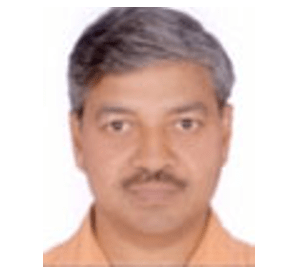
Prof. Venktesh Singh
Professor and Head, Department of Physics
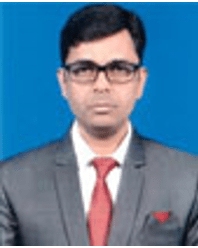
Dr. Budhendra Singh
Associate Professor, Department of Physics

Dr. Vijay Raj Singh
Associate Professor, Department of Physics

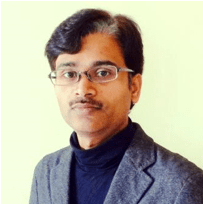
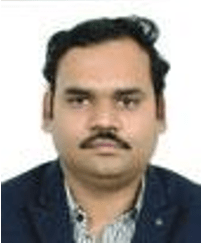
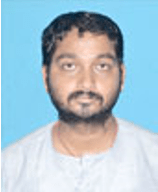
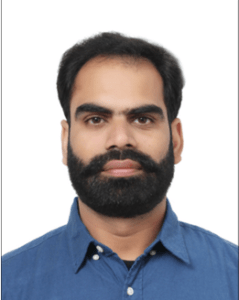
- Lab facility
- Research Lab Condensed Matter and Materials Science
- ) Mechanical Miller The developed indigenous mechanical milling facility is available for the synthesis of different nanomaterial. The deigned planetary type mechanical miller has facilities for millings at high RPM under high pressure reactive milling (under hydrogen pressure/inter gas). Also this miller has twin motion possibility (Circular and Spin). The developed mechanical miller significantly produced several nanomaterials having particle size in the range of 20-30 nm. Moreover this facility has been utilized for the synthesis different nanomaterials for hydrogen storage application and mainly for the synthesis of nanocrystalline High Entropy Alloys and other nanoamterials and alloys
- Glove Box Facility: In order to synthesize nanocrstalline MgH2/Li-Mg-N-H materials it was required that the materials must be transferred in a glove box to avoid the formation of oxide compound. Once the surface oxide and/or oxide compound is formed the material could not able to absorbed hydrogen. An automated glove box has been procured from Biostag for aforesaid purpose.
- Vacuum Sealing Arrangement: An indigenous vacuum sealing technique is also developed at Department of Physics. Through this technique we will able to seal the synthesized materials under vacuum to study the effect of phase transformation and magnetic characteristics after annealing at different temperature.
- Programmable Vertical Furnace: A programmable vertical tubular furnace is available for temperature program desorption measurements as shown in adjacent Figure. This is a seven step programmable furnace can operate up to 1100oC.
- Programmable horizontal Tubular Furnace for the synthesis of carbon based nanostructure materials, various ZnO nanostructures and metallic nanoparticles and compounds through auto combustion
- Magnetic Stirrer with Hot Plate Two High precession Magnetic stirrer with hot plate working temperature upto 500oC for the synthesis of different nanomaterials/ particles.
- Silica tubes with flanges are used the synthesis/ annealing of different samples under vacuum.
- Hydrothermal Autoclave with Teflon and PPL inner lined vessel are procured for the synthesis of different nanoparticle.
- PH Meter: for the synthesis of different nanomaterials through chemical route.
- Vacuum pump: Two vacuum pums are available for various synthesis purposes. Equipments for Property measurements of different materials
- Vickers Micro-Hardness Tester: A Vickers micro hardness tester to measure the mechanical properties of the synthesized alloys and other materials is available in the lab. This micro-hardness tester has Inbuilt Camera with image analysis Software, Hardness Measuring Range: 5-3000 Hv with Test Force: 0.09807, 0.2452, 0.4904, 0.9807, 1.961, 2.942, 4.904, 9.807 N, Auto Measurement of hardness through software attached with the unit.
- Hydrogen storage property measurement setup: indigenously developed a SS reactor and arrangement for water displacement method to study the hydrogen storage characteristics of synthesized materials.
- To study the properties related to suppercapacitor and corrosion Ag/Agcl and reference electrode along with cell are available. Nuclear Sciences Nuclear and Particle Physics Laboratory
- Geiger Muller Counting Systems: Geiger Muller (G.M.) counting systems are used to carrying out a number of Nuclear Physics experiments such as Characteristics curve of a G.M. Detector, to verify the inverse square law for Gamma, Radiation, determination of Beta Absorption correlation factor, efficiency of G.M. Counter for Beta, Radiation, determination of the back scattering factor of a material for beta rays etc,.
- Gamma Ray Spectrometer with NaI (Tl) : These experimental setups are to acquaint the student with some of the basic techniques used for measuring gamma rays such as energy ccalibration, energy Analysis of an unknown gamma source, energy resolution, activity of a gamma emitter, mass aabsorption coefficient, etc.
- HPGe Detector: High Purity Germanium (HPGe) is the novel radiation detection technology that has excellent energy resolution and provides sufficient information to accurately and reliably identify radio nuclides from their passive gamma ray emissions.
- Cosmic Ray Telescope: To detect the cosmic ray, array of four plastic scintillator detectors has been commissioned.
- PXIe -based DAQ: The data acquisition system (DAQ) is an important part of experiments. A typical modern data acquisition system performs the following processes: acquiring signals from real world phenomena, analyzing the trigger, digitizing the signals, and presenting and saving the data. The DAQ in operation at CUSB is built around National Instruments (NI) PXIe-1084 chassis with an embedded PXIe-8840 controller and extended by the PXI FPGA FlexRIO, PXI Digitizer 60MS/s, PXI Digitizer200MS/s, etc.
- Multi-Channel Analyzer (MCA): Multichannel Analyzers (MCAs) are workhorse instruments nuclear spectroscopy. Our Nuclear Lab has different kind to MCA to record and analysis the spectrum from scintillator and HPGe detector.
- Neutron Detector: Neutrons have no electrical charge; therefore, they cannot directly produce ionization in a detector. It means that neutron is much harder to detect. Pulse shapediscrimination is performed to identify if the signal is generated by a gamma ray or a neutron. In order to optimized the pulse shapediscrimination various R&D work is going with neutron detector.
- NIM - Modules: In order to process the digital signal, Nuclear Lab equipped with several general purposes NIM (Nuclear Instrumentation) modules such as discriminators, counters, high voltage with both polarities. amplifiers, shapers, gate generators, coincidence, Fan-in/fan-out, etc.
Physics is an experimental science. In absence of experimental validity, even our grandest ideas are just speculation. Anyone who is planning on becoming a physicist must develop basic understanding of how an experiment works and how the data is analysed.
With this goal in mind, we have designed our syllabus where theoretical courses are well-supplemented by appropriate experiments. In a short span of time we have developed well-equipped laboratories for both the undergraduate and post-graduate courses. Some of the experiments that are carried out in the postgraduate programme are listed below. However, the list is not exhaustive and new experiments are being added time to time in the given list.
| List of Experiments in M.Sc. (new experiments are added time to time) | |
|---|---|
| 1 | To study Hydrogen spectrum and determine Rydberg’s constant with the help of spectrometer diffraction grating and a Hydrogen spectrum tube. |
| 2 | To determine wavelength of sodium light by Fresnel’s Biprism method. |
| 3 | To determine specific rotation of sugar using polarimeter. |
| 4 | To measure radius of curvature of a Plano-convex lens using Newton’s ring apparatus. |
| 5 | Determination of wavelength of sodium light using Newton’s ring apparatus. |
| 6 | To determine wavelength of sodium light by diffraction grating using spectrometer. |
| 7 | To verify Network Theorems (Norton, Thevenin, superposition and maximum power transfer) and to find equivalent current source circuit. |
| 8 | To study transient response in R-C circuit |
| 9 | Measurement of frequency and phase using Lissajous figure. |
| 10 | To study applications of operational amplifier as adder, substractor and buffer. |
| 11 | Construction and verification of Up / Down, synchronous/ asynchronous, ripple decade counters and 4 bits universal shift register. |
| 12 | To measure the charge to mass ratio (e/m) of the electron. |
| 13 | To find speed of sound using resonance column. |
| 14 | To study and construct different type of holographic photographs. |
| 15 | To verify Faraday and Lenz’s law of induction by measuring the induced voltage as function of time. |
| 16 | To determine the speed of light in air |
| 17 | To observe the dependence of the high frequency response of the analog link on D.C. Current passing through the photo transmitter. |
| 18 | To determine Bohr magneton and specific charge (e/m) of electron using Zeeman apparatus. |
| 19 | To determine Verdet’s constant from the relation between rotation angle and magnetic flux using Faraday Effect apparatus. |
| 20 | To determine wavelength of laser using Michelson interferometer. |
| 21 | To study drain and transfer characteristics of JFET. |
| 22 | To study drain and transfer characteristics of MOSFET. |
| 23 | To study input, output and transfer characteristics of PNP / NPN transistor in CB mode. |
| 24 | To study input, output and transfer characteristics of PNP / NPN transistor in CE mode. |
| 25 | Application of IC- 555 as Pulse Generator Sequential Timer and pulse with modulator. |
| 26 | Construction and verification of half adder, full adder, half substractor, and full substractor using combinational circuits. |
| 27 | To construct and study JK, JKMS and T Flip flops |
| 28 | Determination of ᵱ (rho) the resistance per unit length of a Carey Foster’s bridge and find the melting point of given substance using Platinum resistance thermometer. |
| 29 | To study NAND gate as universal gate. |
| 30 | To study and verify binary storage counter, type t Flip – Flop, Up, Down and Decimal counter. |
| 31 | Construction and verification of Up / Down, synchronous/ asynchronous, ripple decade counters and 4 bits universal shift register. |
X-Ray Diffraction (Coming soon..)
Dielectric measurement system
PE Loop Ferroelectric test system
D33 Meter
Manual Hydraulic press machine
Spin coater
Micro-balance
Magnetic stirrer with Hot Plate
Muffle furnace
Research Facilities in the SpinTec-Lab (Dr. Vijay Raj Singh)E-BEAM AND THERMAL EVAPORATOR- E Beam and Thermal Evaporator processing is a technology with broad range of commercial applications. This technology is widely used for thin film deposition of oxides and metals.
SPIN COATER- This instrument is manufactured by V.R Technology. Using this technology we can grow thin films by chemical solution deposition method. MUFFEL FURNACE- In this furnace we can anneal the samples particularly thin films either in vacuum or in any atmosphere. In this furnace we can reach the desired temperature in controlled manner up to 1200◦C.
2450 SOURCE METER- This source meter is manufactured by Keithley. Using this instrument we can do transport measurement.
ULTRASONIC CLEANER- This instrument is manufactured by LABMAN. Using this instrument we can clean the substrate in controlled manner.
Research facilities available in Functional Materials Research Group (Dr. Rohit R Shahi)Name: Mr.Balgangadhar Upadhyay
Lab attendant
: balgangadhar@cub.ac.in
: +91 - 631-2229-
| S.No. | Research Scholar/JRF/Project staff | Photograph | Guide | Academic Qualification | Research Area | Achievement/Award /Publication |
|---|---|---|---|---|---|---|
| 1 | Shekhar Suman shekhar@cusb.ac.in CUSB2004175012 |
Dr. Nitin Chandra | M.sc | Study in Quantum and Biosystems | GATE qualified AIR- 756 | |
| 2 | Subhasis Parhi subhasis@cusb.ac.in |
Prof. Venktesh Singh | M.Sc. | Experimental Neutrino and Dark Matter Physics | NA | |
| 3 | Priyanka Kumari priyanka.phy@cusb.ac.in |
Dr. Rohit Ranjan Shahi | MSc | Magnetic Properties of High Entropy Alloys | ||
| 4 | ASHUTOSH KUMAR ashutoshswg007@gmail.com CUSB2004175004 |
Dr. Akhilananda Kumar | Integrated MSc in Applied Physics | Thin films of oxides of vanadium | NA | |
| 5 | Abhijeet Kumar abhijeetkumar@cusb.ac.in CUSB2004175001 | Dr. Budhendra K Singh | M.Sc | Experimental Condensed Matter Physics | NA | |
| 6 | Aradhana kumari aradhanakjha1997@gmail.com CUSB2004174003 |
Dr. Vijay Raj Singh sir | Msc | XMCD study of thin film skyrmions. | Not yet | |
| 7 | Siddhartha Swarup Parida siddharthaparida@cusb.ac.in CUSB2004175013 |
Dr. Budhendra Kumar Singh | MSc Physics | Condensed Matter Physics | ||
| 8 | RITESH SHARMA ritesh@cusb.ac.in CUSB2004175010 |
Prof. Venktesh Singh | M.Sc. | High Energy Physics | First Rank Holder at B.R.A. Bihar University, CSIR NET LS | |
| 9 | GREESHMA C greeshma@cusb.ac.in | Dr Lakhwinder Singh | MSc | High energy physics | ||
| 10 | Riya Dawn riyadawn@cusb.ac.in CUSB2004175011 |
Dr Vijay Raj Singh | M.Sc. | Material science, thin film and nano technology | NA | |
| 11 | Riya Dawn riyadawn@cusb.ac.in CUSB2004175011 |
Dr Vijay Raj Singh | MSc | Material science, thin film and nano technology | NA | |
| 12 | Amit Kumar Gupta amitgupta@cusb.ac.in CUSB 2004175002 |
Dr. Rohit Ranjan shahi | Msc | To study the supercapacitive properties of High Entropy oxide material | N.A. | |
| 13 | Binayak Das binayak@cusb.ac.in CUSB2004175005 |
Dr. Puneet MIshra | M.Sc. | Molecular Nanoscience | ||
| 14 | Rajeev Raj rajeev@cusb.ac.in CUSB2004175009 |
Dr. Lakhwinder Singh | MSc. | Study of Dark Sector with Novel Detector Techniques |
- Project
- Principal Investigator: Dr. Vijay Raj Singh , Funding agency: IUAC, New Delhi, 10 Lacs, (01-05-2020 to 01-05-2023)
- Principal Investigator: Dr. Vijay Raj Singh , Funding agency: DST (Early Career Research Award), New Delhi, 49 Lacs, (01-09-2018 to 01-09-2021)
- Principal Investigator: Dr. Vijay Raj Singh , Funding agency: BSR-UGC, New Delhi, 10 Lacs, (01-09-2018 to 01-09-2021)
- Principal Investigator: Dr.Rohit RanjanShahi , Funding agency: DST, New Delhi, 35 Lacs, (28-11-2013 to 28-11-2020)
- Principal Investigator: Dr.Rohit RanjanShahi , Funding agency: DST, New Delhi, 16 Lacs, (17-07-2019 to 16-07-2021)
- Principal Investigator: Dr.Puneet Mishra , Funding agency: UGC, New Delhi (FRP Start-up grant), 10 Lacs, (04-11-2019 to 03-11-2021)
- Principal Investigator: Dr.Puneet Mishra , Funding agency: SERB-DST (Core Research Grant), 44 Lacs, (28-12-2021 to 27-12-2024)
- Awards: Dr.RohitRanjanShahi
- Young Scientist Award (Materials science) 2014; From Indian Science Congress Association
- Young Scientist Award 2017; Indian association of Hydrogen Energy and Related advanced Materials, University of Kerala Trivendrum.
- INSPIRE Faculty Award 2013 from INSA-DST
- Focused Area Science research fellowship Indian Academy of Sciences (May 2020)
- Specific Research Areas
- Research Publications
E-Resources for Courses
|
Course Code |
Course Name |
Question papers (Previous Years) |
Notes and Presentations |
Video and Suggested readings |
Course Assessment Design - MSc
- Semester –I
- Semester –II
- Semester –III
- Semester-IV


